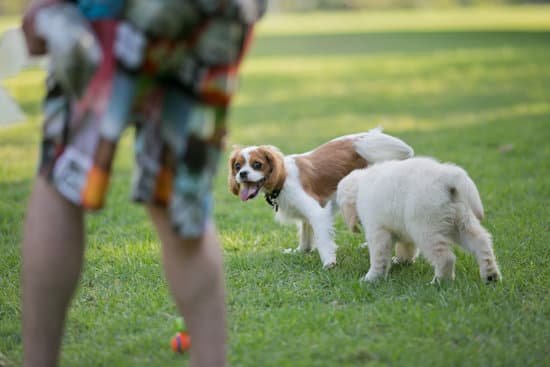Are you wondering how to train your dog to go through a dog door? Teaching your furry friend to use a dog door can provide them with the freedom and independence they need to access the outdoors whenever they please. In this article, we’ll explore the step-by-step process of training your dog to use a dog door effectively and confidently.
One of the first steps in training your dog to go through a dog door is understanding the benefits of having one. A dog door allows your pet to have easy access to the outdoors, giving them the ability to relieve themselves, exercise, and enjoy fresh air without having to rely on their owners to let them in and out.
This can be especially beneficial for pet owners who may not always be available or present at home during the day.
Choosing the right type of dog door for your pet is crucial in ensuring their comfort and safety. Whether you have a small breed or a larger one, it’s important to select a size and style that best suits your pet’s needs.
Additionally, understanding how to properly introduce and train your furry friend will help build their confidence in using the dog door independently. Let’s explore these key steps in detail as we delve into the process of training your four-legged companion.
Choosing the Right Dog Door for Your Pet
When it comes to choosing the right dog door for your pet, there are several factors to consider. The size of your dog is an important consideration, as you want to ensure that the dog door is large enough for your pet to comfortably pass through. Additionally, the location of the dog door is important – whether it’s installed in a wall, door, or window will determine the type of dog door you need.
Size and Location
If you have a small dog, a flap-style door may be suitable, while larger dogs may require a more robust sliding or electronic dog door. Consider the location where you want to install the dog door – if it’s a high-traffic area, you may want to invest in a more secure and durable option.
Material and Security
The material of the dog door is another important consideration. Look for sturdy and weatherproof materials that can withstand outdoor elements. Additionally, security features such as locking mechanisms can provide peace of mind, especially when installed in areas where unwanted animals or intruders could potentially enter.
Electronic Options
For added convenience and security, consider an electronic dog door that can be programmed to only allow access to your pet using a collar sensor. This can prevent stray animals from entering your home and provides additional peace of mind.
By carefully considering these factors when choosing the right dog door for your pet, you can ensure that it meets both your needs and those of your furry friend. Once you have selected and installed the appropriate dog door, you can move on to introducing your pet to this new element in their environment and training them on how to use it effectively by following some simple techniques on how to train a dog to go through a dog door.
Ensuring Your Dog Is Comfortable With the Dog Door
Now that you have chosen the right dog door for your pet, it is important to ensure that your dog is comfortable with it before starting the training process. This will help reduce any fear or anxiety your dog may have about using the new door. Here are some steps you can take to ensure your dog is comfortable with the dog door:
1. Familiarize your dog with the door: Allow your dog to inspect and sniff the dog door so they become familiar with it. You can also encourage them to walk through it by holding it open and offering treats on the other side.
2. Create a positive association: Place treats or their favorite toys near the door to create a positive association with the area around it. This will help your dog see the door as a welcoming and rewarding space.
3. Provide encouragement and support: Use gentle encouragement and praise to reassure your dog when they approach or investigate the door. Avoid forcing them through or showing impatience, as this can lead to negative associations with the door.
Once your dog is comfortable with the presence of the dog door, they’ll be more willing to start training on how to go through it. Remember that every dog is different, so take your time and be patient as you work through this process.
Introducing Your Dog to the Dog Door
Introducing your dog to the dog door can be a simple process if done correctly. It is essential to approach this step with patience and a positive attitude. The first step in introducing your dog to the dog door is ensuring that they are comfortable with the concept of using it.
To start, prop open the dog door so that it remains open for your pet to walk through at their leisure. This will allow them to become accustomed to the presence of the door and reduce any anxiety they may feel about it.
Once your dog is comfortable with the presence of the dog door, you can begin training them on how to use it. Start by standing on one side of the door and calling your dog from the other side with a treat or their favorite toy. Encourage them to walk through the door, offering praise and rewards when they do so successfully.
If your dog is hesitant to use the door, continue practicing this exercise until they become more confident. It may take some time for them to understand how it works, but with patience and consistency, most dogs will eventually get used to using a dog door.
Another helpful tip when introducing your dog to a new dog door is to act as though you are excited about it yourself. Dogs are known for picking up on their owner’s emotions, so if you show enthusiasm about the new addition, your furry friend will likely follow suit.
| Training Tips | Details |
|---|---|
| Start with an open door | Allow your dog to get used to having a new presence in its space |
| Use rewards and praise | Encourage positive behavior by rewarding your pet when they go through the door |
| Show excitement | Dogs pick up on owner’s emotions so show enthusiasm about the new addition |
Using Positive Reinforcement to Train Your Dog
When it comes to training your dog to use a dog door, positive reinforcement is key. This training method focuses on rewarding your dog for their desired behaviors, which in this case, is using the dog door. By using positive reinforcement, you can effectively teach your dog how to go through the dog door and make the experience a positive one for them.
To successfully train your dog to use the dog door through positive reinforcement, consider implementing the following steps:
- Use treats: When introducing your dog to the dog door, use their favorite treats to motivate them. Place a treat on the other side of the door to encourage them to push through it.
- Use praise: Whenever your dog successfully goes through the dog door, be sure to praise and pet them. Positive verbal reinforcement lets your dog know that they are doing a good job.
- Patience: It’s important to be patient when training your dog. Some dogs may take longer than others to get used to the idea of going through the door. Be consistent with training and reward their progress.
By utilizing positive reinforcement techniques such as treats, praise, and patience, you can effectively train your dog how to go through a dog door in a way that is encouraging and supportive for them. Remember that every dog is different, so take into account their individual personality and adjust your training accordingly. With time and consistency, your furry friend will be confidently using the dog door in no time.
It’s crucial to note that punishment should never be used when training your pet to use the dog door. Negative reinforcement or punishment could cause fear or anxiety around the door, making it even more challenging for your pet to use it independently.
Troubleshooting Common Challenges
Patience and Persistence
Training your dog to use a dog door may come with its fair share of challenges, but it’s important to approach these obstacles with patience and persistence. Even the most well-behaved dogs may struggle at first, so consistency is key. Keep in mind that every dog is different, and some may take longer to adjust than others.
Addressing Fear or Anxiety
Some dogs may exhibit fear or anxiety when it comes to using the dog door. This could be due to unfamiliar sounds, the sensation of the flap on their back, or simply facing a new experience. To help your pet overcome these emotions, start by associating positive experiences with the door. Use treats and praise to encourage them to approach and eventually go through the door without hesitation.
Dealing With Physical Limitations
For some dogs, especially those with health issues or older canines, using a dog door might pose physical limitations. If your dog struggles with mobility or has trouble understanding how to use the door, consider seeking guidance from your veterinarian. They can provide advice on how to make accommodations for your pet, such as installing a larger or lower dog door, or providing additional support during training sessions.
Training your canine companion to go through a dog door requires time and effort but it can lead to greater independence for both you and your pet. By addressing common challenges with patience, positive reinforcement, and appropriate adjustments based on your pet’s needs, you can ensure a smooth transition towards using the dog door effectively.
As you work through any potential hurdles, keeping in mind that every dog is unique will ultimately make the training process more successful in the long run.
Gradually Transitioning to Independence
Once your dog has become comfortable using the dog door under your supervision, it is time to gradually transition them to independence. This means allowing them to use the dog door without your guidance or encouragement. One effective way to do this is by creating a routine that encourages your dog to use the door on their own.
Start by leaving the dog door open during periods when you are home and able to keep an eye on your pet. This will allow them to come and go as they please, getting used to the idea of using the door independently. You can also encourage them with treats or praise whenever they use the door on their own, reinforcing positive behavior.
It is important not to rush this process as every dog will adapt at their own pace. Some dogs may take longer than others, and it’s crucial not to force them through the door or punish them for not using it right away. With patience and consistency, most dogs will eventually gain confidence in using the dog door independently.
| Training Tip | Description |
|---|---|
| Leave Dog Door Open | Allow your dog to come and go as they please while still under your supervision. |
| Positive Reinforcement | Continue to offer rewards and praise when your dog uses the dog door independently. |
| Patience is Key | Avoid forcing or punishing your dog for not adapting quickly, each pet has its own pace. |
Maintaining Your Dog’s Confidence and Ability to Use the Dog Door
In conclusion, training your dog to go through a dog door can be a rewarding and beneficial experience for both you and your pet. By understanding the benefits of a dog door and choosing the right one for your pet’s needs, you can provide them with the freedom and independence they crave while still maintaining security in your home.
Ensuring that your dog is comfortable with the dog door and introducing them to it gradually can help build their confidence and ability to use it effectively.
Using positive reinforcement to train your dog is key in making the process a positive and enjoyable one for them. Troubleshooting common challenges such as fear or reluctance to use the door can be addressed with patience and consistency. Gradually transitioning to independence by allowing your dog more unsupervised access to the door as they become more comfortable using it will further reinforce their confidence.
Maintaining your dog’s confidence and ability to use the dog door involves regular practice, praise, and reinforcement. It’s important to continue positively reinforcing their behavior even after they have successfully learned how to use it. This ongoing support will help solidify their understanding of how to operate the door and ensure that they maintain this skill over time. With encouragement, patience, and consistent training, you can successfully teach your furry friend how to go through a dog door.
Frequently Asked Questions
Why Won’t My Dog Go Through the Doggy Door?
There could be several reasons why your dog won’t go through the doggy door. It’s possible that they are afraid of it, or they simply haven’t been properly trained to use it. Some dogs may also have physical limitations that make using the door challenging.
How Do I Get My Dog to Go Through the Doorway?
To get your dog to go through the doorway, you can start by slowly introducing them to the door and providing positive reinforcement when they show interest in it. You can use treats or toys to encourage them to approach and eventually pass through the door. Consistent training and patience are key.
How Do I Get My Dog to Go Out of the Doggie Door?
If you want your dog to go out of the doggie door, you can use similar training methods as getting them to go through it in the first place. Start by making the experience as positive as possible for your dog, and gradually build their confidence in using the door independently.
It may take time, but with consistent training, most dogs can learn to use a doggie door effectively.

Welcome to the blog! I am a professional dog trainer and have been working with dogs for many years. In this blog, I will be discussing various topics related to dog training, including tips, tricks, and advice. I hope you find this information helpful and informative. Thanks for reading!





